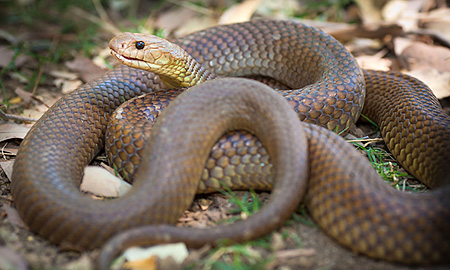Introduction
Tiger serpents are among the most popular and been afraid reptiles in Australia, widely identified for their striking look and potent poison. This post intends to delve into the intricacies of the tiger serpent's habitat, distribution, actions, and what one can expect when running into these interesting animals. By understanding where to discover them and how to browse prospective risks, you can appreciate their role in the community while ensuring your security.
Tiger Serpent Habitat: Where to Discover Them and What to Expect
Tiger serpents are predominantly discovered in southeastern Australia, including Tasmania, where they flourish in a range of settings. Their versatility allows them to inhabit varied surfaces such as coastal regions, wetlands, grasslands, and also metropolitan areas.
Geographical Circulation of Tiger Snakes
The geographical reach of tiger serpents extends across numerous Australian states. They are especially typical in:
- Tasmania: The Tasmanian tiger serpent is one of one of the most recognized subspecies. Victoria: Found near water bodies like rivers and lakes. New South Wales: Choosing bushland areas near water sources. Western Australia: Even more commonly seen around swamps and estuaries.
Understanding the geographical circulation is critical for both conservation initiatives and public recognition pertaining to encounters with these snakes.
Preferred Habitats of Tiger Snakes
Tiger serpents grow in various habitats. Below are some typical environments where they might be located:
Wetlands: They favor marshy or marshy areas where they can access prey easily. Coastal Regions: Near beaches or rocky shorelines give bountiful food sources like fish and amphibians. Forested Areas: Thick thicket supplies sanctuary from predators while providing searching grounds.Behavioral Patterns Related to Habitat
Understanding tiger snake habits within their environments is necessary for interaction monitoring:
- Nocturnal Activity: Tiger snakes often tend to be a lot more active throughout golden hours (sunset and dawn), making them more difficult to detect during daytime. Territorial Nature: They exhibit territorial habits; hence, it's critical to respect their space if encountered.
This understanding can assist reduce unwanted interactions between human beings and tiger snakes.
Are Tiger Snakes Venomous?
Yes, tiger serpents are undoubtedly poisonous. Their poison has neurotoxins that can cause paralysis or even death if untreated.
What Makes Their Venom Dangerous?
The potency of a tiger snake's poison varies depending on numerous elements:
- Geographic location Individual health Quantity injected throughout a bite
Symptoms of a Tiger Snake Bite
Recognizing signs and symptoms early is crucial:
- Pain at the bite site Swelling Difficulty breathing
Immediate clinical focus is vital if bitten.
First Help for Serpent Bites
Knowing first aid treatments can be lifesaving in instance Additional reading of a serpent bite.
First Help Tips for Serpent Bites
Stay tranquility; maintain the afflicted location still. Call emergency solutions immediately. Apply a pressure plaster over the bite site. Keep the private resting up until aid arrives.Following these actions can substantially enhance end results following a serpent encounter.
Where Else Can You Encounter Tiger Snakes?
While they're typically found in their natural habitats, urbanization has actually resulted in enhanced encounters with humans.
Urban Encounters
Tiger serpents might Conservation and Education venture right into yards or parks looking for food or water sources.
Precautions When Treking or Exploring
When exploring locations understood for tiger snake environments:

- Wear thick boots Stay on paths Be vigilant
Taking these safety measures will aid lessen threats while you enjoy nature.
Baby Tiger Snakes: A Special Viewpoint on Growth
Just like grownups, baby tiger serpents are birthed venomous but smaller in dimension.

Characteristics of Baby Tiger Snakes
- Size: Normally around 20-- 30 centimeters when born. Appearance: Sporting activity similar pigmentation as adults but might have lighter bands initially.
Understanding their growth assists in valuing their environmental function from early stage onward.
FAQs about Tiger Snakes
1. Are all tiger snakes venomous?
Yes, all varieties of tiger serpents have poison efficient in triggering major harm.
2. How can I identify a tiger snake?
Look for distinctive banding patterns ranging from yellowish-brown to blackish colors along their bodies; adults typically expand between 1-- 2 meters long.

3. What ought to I do if attacked by a tiger snake?
Seek instant clinical focus; use first aid procedures as gone over earlier while maintaining calm.
4. Do baby tiger snakes pose any type of danger?
Absolutely! In spite of their small dimension, infant tiger snakes are still venomous and can provide bites that call for severe medical attention.
5. Are there any kind of details habitats I need to avoid?
Avoid going through dense underbrush or near stagnant water where conditions prefer serpent visibility throughout warmer months.
6. Exactly how do conservation initiatives influence tiger snake populations?
Conservation initiatives focus on environment preservation which directly impacts populace security by making certain sufficient food resources and secure reproduction locations.
Conclusion
In recap, understanding "Tiger Serpent Habitat: Where to Discover Them and What to Anticipate" not just enhances our knowledge concerning these impressive reptiles yet also boosts our ability to exist together safely with them in shared atmospheres. From identifying their chosen habitats to knowing exactly how to react efficiently if bitten, extensive knowledge empowers all of us-- whether we're wildlife lovers or casual walkers-- to value this remarkable element of Australia's all-natural heritage while prioritizing our safety.
This write-up acts as a substantial guide on every little thing pertaining to tiger snake habitats! Whether you're a passionate Click here for info traveler or a person looking simply for info about these animals, understanding how they communicate within their environments-- and just how we suit that photo-- is crucial!